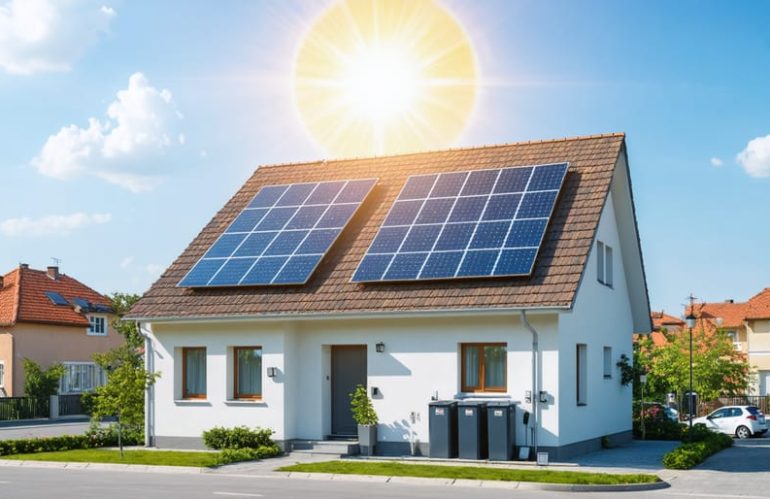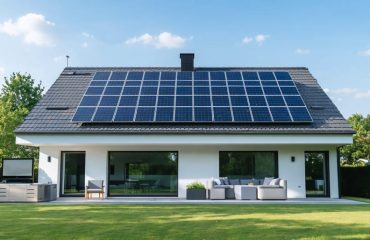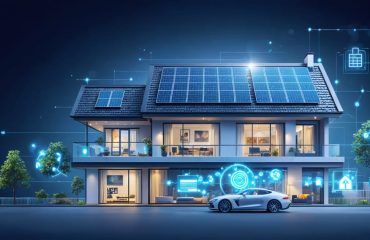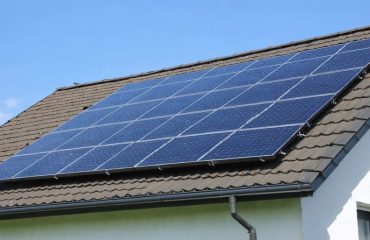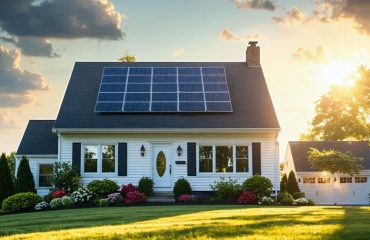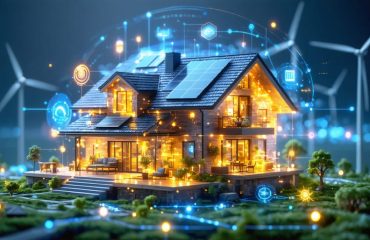Transform your home into a modern energy powerhouse with today’s cutting-edge residential solar technology. The latest innovations in photovoltaic systems, smart inverters, and battery storage solutions have made designing the perfect solar system more accessible and cost-effective than ever before.
Advanced monitoring systems now allow homeowners to track energy production in real-time through smartphone apps, while high-efficiency panels capture up to 23% more sunlight than traditional models. Integrated battery solutions like the Tesla Powerwall and LG Chem RESU provide reliable backup power during outages and maximize self-consumption of solar energy.
The financial benefits are equally compelling. Modern solar installations typically pay for themselves within 5-7 years through reduced utility bills and government incentives, while increasing property values by an average of 4%. With system lifespans extending beyond 25 years and warranties becoming increasingly comprehensive, residential solar technology represents both an environmental commitment and a sound investment in your home’s future.
These advancements make it possible for homeowners to achieve energy independence while contributing to a sustainable future – all while enjoying significant long-term savings on their energy bills.
Modern Solar Panel Innovations Worth Your Investment
High-Efficiency Bifacial Panels
High-efficiency bifacial solar panels represent a significant leap forward in residential solar technology, offering homeowners a smart way to maximize their energy production. These innovative panels capture sunlight from both sides, allowing them to generate power from direct sunlight on the front and reflected light on the back.
Unlike traditional solar panels, bifacial panels can harvest energy from light bouncing off various surfaces, including light-colored roofing materials, snow, or even your home’s light-colored exterior walls. This dual-sided design typically increases energy production by 5-30% compared to conventional panels, depending on installation conditions and surrounding reflective surfaces.
The technology works particularly well in snowy regions, where white ground cover can significantly boost winter energy production. Even in standard installations, the ambient light reflecting off your roof or ground can provide noticeable gains in daily energy generation. Many homeowners find that bifacial panels perform exceptionally well on raised rack systems or pergolas, where light can easily reach both panel surfaces.
While bifacial panels may cost slightly more upfront, their increased energy production often leads to faster payback periods and higher long-term savings. As an added benefit, these panels are typically built with high-quality materials and come with extended warranties, ensuring reliable performance for decades. For homeowners looking to maximize their solar investment, bifacial panels offer a compelling blend of innovative technology and practical benefits.
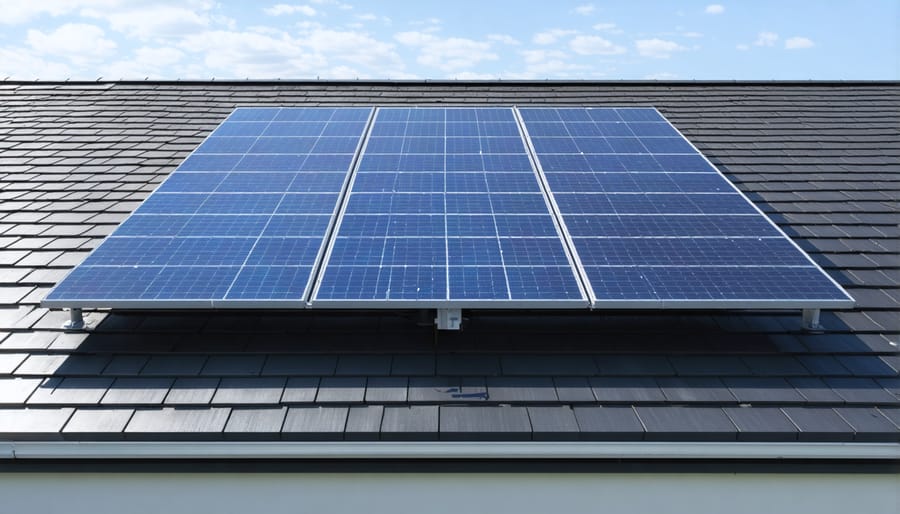
Smart Monitoring Systems
Modern solar systems come equipped with sophisticated monitoring capabilities that put you in complete control of your energy production and consumption. These smart monitoring systems allow you to track your solar panel performance in real-time through user-friendly mobile apps and web interfaces.
With these monitoring tools, you can view detailed data about your system’s energy generation, identify peak production hours, and spot potential issues before they impact your system’s efficiency. Many platforms provide easy-to-understand graphs and charts that show daily, monthly, and yearly energy production patterns, helping you optimize your energy usage.
Advanced monitoring systems also send automatic alerts when they detect unusual performance patterns or maintenance needs. This proactive approach helps prevent system downtime and ensures your solar investment continues to perform at its best. Some systems even integrate with smart home devices, allowing you to automatically adjust your energy consumption based on solar production.
Weather forecasting features help you plan your energy usage by predicting upcoming solar production levels. Many monitoring systems also provide detailed savings reports, showing exactly how much money you’re saving on utility bills and your environmental impact in terms of reduced carbon emissions.
For extra peace of mind, many solar installers can remotely monitor your system’s performance, quickly addressing any issues that arise and ensuring optimal operation year-round.
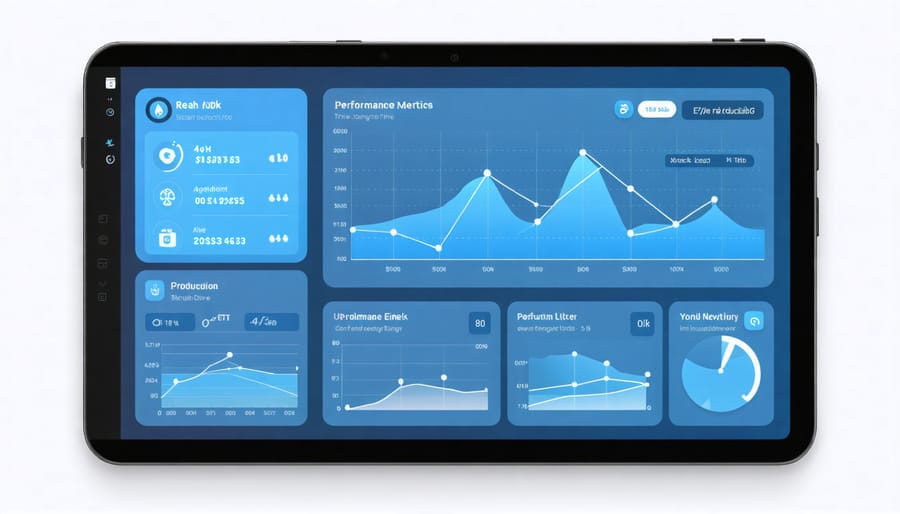
Storage Solutions That Transform Your System
Next-Gen Battery Technology
The latest generation of solar battery technology is revolutionizing how homeowners store and use their solar energy. Today’s lithium-ion batteries offer up to twice the storage capacity of systems from just five years ago, while taking up less space and lasting significantly longer.
Modern solar batteries now commonly feature smart management systems that automatically optimize charging and discharging cycles, extending battery life and improving overall efficiency. Many new models can operate effectively for 15 years or more, matching the lifespan of your solar panels and providing better long-term value.
Perhaps the most exciting development is the introduction of modular battery systems. These allow homeowners to start with a basic storage capacity and easily expand it later as their energy needs grow. Some systems can even integrate with electric vehicle charging, creating a comprehensive home energy ecosystem.
Safety improvements are another key advancement. New battery chemistry formulations are more stable and feature multiple layers of protection, including temperature monitoring, surge protection, and automatic shutdown systems. This makes modern batteries not just more efficient, but also more reliable and safer than ever before.
Cost-wise, battery prices continue to fall while performance improves. When combined with available tax incentives and rebates, today’s battery storage systems offer an increasingly attractive return on investment for homeowners looking to maximize their solar energy independence.
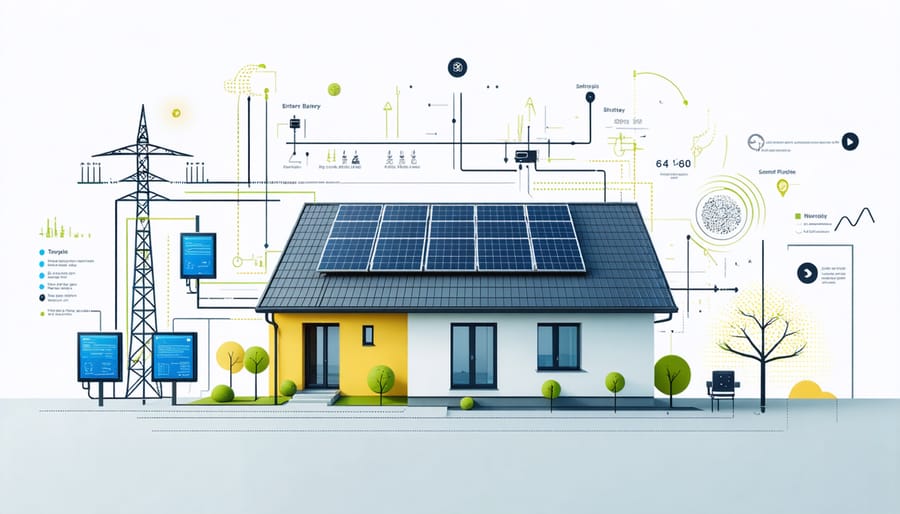
Smart Grid Integration Features
Modern residential solar systems seamlessly integrate with smart grids, creating a two-way relationship between your home and the power network. This intelligent connectivity allows your solar installation to automatically optimize energy flow based on your household’s needs and grid conditions.
Smart inverters play a crucial role in this integration, constantly monitoring grid stability and adjusting power output accordingly. During peak demand periods, your system can automatically send excess power back to the grid, earning you credits through net metering programs. When grid power is expensive or in high demand, your system can prioritize using stored energy from your battery backup system.
Many current solar installations include smart monitoring systems that provide real-time data through user-friendly mobile apps. These apps let you track energy production, monitor consumption patterns, and adjust settings remotely. Some systems even integrate with smart home devices, automatically running power-hungry appliances when solar production is highest.
Grid integration features also provide essential safety benefits. During power outages, smart systems can instantly disconnect from the grid to prevent backfeeding, while maintaining power to your home through battery storage. As utilities continue modernizing their infrastructure, these smart features become increasingly valuable, enabling participation in demand response programs and virtual power plants, which can provide additional income opportunities for solar homeowners.
Maximizing ROI Through Strategic Upgrades
Priority Upgrades for Older Systems
For homeowners with solar installations more than five years old, several key upgrades can significantly boost system performance and energy savings. Starting with inverter technology, upgrading to modern microinverters or power optimizers can increase energy production by 5-25%, especially in partially shaded conditions. Many solar retrofit options now make this process straightforward and cost-effective.
Battery storage integration represents another crucial upgrade, particularly for systems installed before storage solutions became mainstream. Modern lithium-ion batteries offer superior performance and longevity compared to older lead-acid options, enabling better energy independence and backup power capabilities.
Monitoring system upgrades provide detailed performance tracking and smart home integration. New smart monitoring platforms can identify efficiency drops, predict maintenance needs, and optimize energy consumption patterns through mobile apps and home automation systems.
Panel cleaning systems and advanced mounting hardware can also improve output. Self-cleaning technologies and adjustable racking systems help maintain peak performance while reducing maintenance requirements. For maximum benefit, consider combining these upgrades with an energy audit to identify additional optimization opportunities.
Before proceeding with any upgrades, consult with a certified solar professional to evaluate your current system’s compatibility and potential return on investment. Many utilities offer incentives for modernizing existing solar installations, making these improvements more affordable.
Cost-Benefit Analysis Tools
Making an informed decision about solar technology investments requires careful analysis of both costs and potential returns. Several valuable tools can help you maximize your solar savings and evaluate different upgrade options.
Solar calculators are essential tools that factor in your location, current energy usage, roof orientation, and local electricity rates to estimate potential savings. Many utilities and solar providers offer free online calculators that provide customized projections based on your specific circumstances.
Payback period calculators help determine how long it will take to recoup your initial investment. These tools consider installation costs, energy production estimates, and available incentives like tax credits and rebates. Most residential solar systems achieve payback within 5-10 years.
Energy monitoring apps provide real-time data about your system’s performance, helping you track actual savings against projections. These apps can identify efficiency issues and recommend optimization strategies to increase returns.
Investment comparison tools allow you to weigh solar upgrades against other home improvements or investment options. They typically account for factors like property value increase, maintenance costs, and long-term energy price trends.
Remember to factor in local incentives, financing options, and warranty coverage when using these tools. Many utilities and solar providers offer free consultations to help interpret results and develop a personalized upgrade strategy.
Future-Proofing Your Solar Investment
Compatibility Considerations
Modern residential solar systems are designed with expandability in mind, making it easier than ever to adapt your installation as your energy needs grow. Most inverters and mounting systems can accommodate additional panels, allowing homeowners to start small and scale up over time. This flexibility is particularly valuable when participating in various solar incentive programs that may offset expansion costs.
Integration capabilities have also evolved significantly. Today’s solar systems can seamlessly connect with home energy management systems, smart thermostats, and battery storage solutions. This interconnectivity allows for optimized energy usage and enhanced monitoring through user-friendly smartphone apps.
When considering compatibility, it’s important to evaluate your roof’s condition and electrical system. Most modern homes can accommodate solar installations with minimal modifications, though older electrical panels may need upgrading to handle the additional power flow. The good news is that solar technology works with virtually all roofing materials, from traditional asphalt shingles to metal roofing.
Future-proofing your installation is also crucial. Choose components that support common communication protocols and have standardized connections. This ensures you can easily add new features like energy storage systems or electric vehicle charging stations as your needs evolve. Many manufacturers offer warranties and upgrade paths that protect your investment while maintaining system efficiency.
Tomorrow’s Technologies Today
The future of residential solar technology is shaping up to be more efficient, aesthetically pleasing, and integrated than ever before. Solar roof tiles, which look identical to traditional roofing materials, are becoming more affordable and widespread, offering homeowners a seamless alternative to conventional panels. These tiles achieve comparable efficiency while maintaining your home’s architectural appeal.
Perovskite solar cells are emerging as a game-changing technology, promising higher efficiency rates at lower production costs. When combined with traditional silicon cells in tandem configurations, these cells could boost energy conversion rates above 30%, significantly outperforming current solutions.
Smart solar systems with AI-powered management are on the horizon, automatically adjusting energy storage and consumption patterns based on weather forecasts and household habits. These systems will integrate seamlessly with smart home devices, optimizing energy use throughout your property.
Transparent solar windows are progressing rapidly, with several manufacturers preparing for mass production. These windows can generate electricity while maintaining clarity, effectively turning your home’s windows into subtle power generators.
Battery technology is also advancing quickly, with solid-state batteries promising longer lifespans, faster charging, and improved safety compared to current lithium-ion solutions. These innovations will enhance energy storage capabilities, making solar systems more reliable and efficient year-round.
Keep these developments in mind when planning your solar investment, as many will become commercially available within the next few years, offering enhanced benefits for early adopters.
As we’ve explored throughout this article, residential solar technology has evolved significantly, offering homeowners more opportunities than ever to harness clean, renewable energy. From advanced photovoltaic panels and smart inverters to integrated battery storage systems, today’s solar solutions provide both environmental benefits and substantial cost savings.
The decision to invest in solar technology is now more compelling than ever, with increased efficiency, decreased installation costs, and numerous financial incentives available. Homeowners can expect to see returns on their investment through reduced energy bills, increased property values, and potential tax benefits, often within 5-10 years of installation.
To get started with your solar journey, consider these key steps: First, conduct a thorough energy audit of your home to understand your consumption patterns. Next, obtain multiple quotes from reputable solar installers who can assess your roof’s solar potential and recommend appropriate system sizes. Don’t forget to research available incentives and financing options in your area, as these can significantly reduce your initial investment.
Remember that solar technology continues to advance rapidly, so working with qualified professionals who stay current with industry developments is crucial. Whether you’re ready to make the switch now or planning for the future, solar power represents a smart, sustainable choice for powering your home while contributing to a cleaner environment for generations to come.

